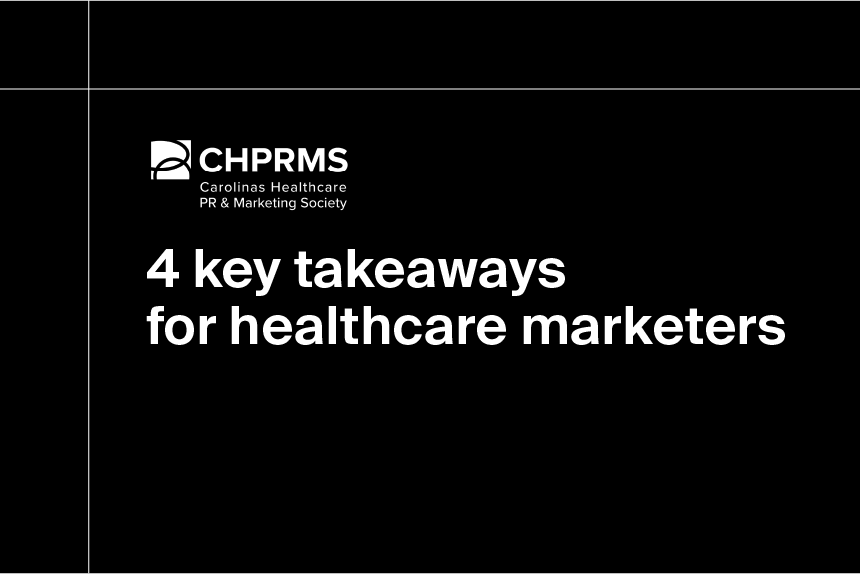Mayo Clinic in Rochester, MN, was the first health system to use an electronic health record (EHR) in 1960. Since then, electronic capture, storage and transmission of healthcare data has substantially increased. This digital shift has led to providers producing around 137 terabytes of data daily, with data growth rates estimated around 47% annually. With emerging technologies like cloud storage, the ability to work with large data sets in healthcare is becoming increasingly accessible.
So where does all this data come from? And how should the healthcare industry use it to transform patient experience and access?
Keep reading to learn about the significance of big data in healthcare and how data-driven solutions are transforming the healthcare industry.
What exactly is big data in healthcare?
Gartner defines big data as “high-volume, high-velocity and/or high-variety information assets that demand cost-effective, innovative forms of information processing that enable enhanced insight, decision making, and process automation.” Big data is unmanageable by conventional data storage methods and requires more agile methods to create insights, trends, and models.
Big data sources in healthcare primarily include:
- Medical claims data (referred to as 837s), often sourced from clearing houses and third-party claims data aggregators
- Remit data (referred to as 835s), sourced similarly to medical claims data
- Patient medical records, primarily sourced from hospital and provider EHRs
- Public health and consumer data, such as social determinants of health and demographic attributes that come from a variety of publicly and privately available consumer data sources
- Clinical research data, typically collected as part of clinical trials
- Biometric data, often acquired by healthcare testing devices
Although the digitization of medical records and the rapid advancement of medical technology generates big data, the industry has been slow to adopt the cloud-based computing environments necessary to work with this data.
In recent years, health systems have started to recognize the importance of investing in analytics with the implementation of data visualization tools such as Tableau and PowerBI. They’ve also made the move from on-premise servers to cloud services such as Azure, AWS and Google. In addition, many providers are investing in analytics leaders and teams outside of traditional IT who can take data from raw to insights.
With these investments, it’s important to understand where big data can be used to improve patient experience and access.
How can big data improve healthcare?
When done correctly, extensive data gathering and analysis can answer a variety of use cases that drive better decisions in healthcare, including making the right services available to the right patients at the right time.
The first step is to appropriately identify and define your use case — that is, what question are you trying to answer? For example, where are patients going for cancer care?
The second step is to identify the data source(s) that best answer the question you are asking. Claims data can help you evaluate the entire market of cancer care. For instance, with Definitive Healthcare’s Atlas All-Payor Claims Dataset you can understand which procedures are performed for any patients with a diagnosis of cancer.
Once the data is identified and acquired, it needs to be transformed and structured in a way to facilitate robust analysis. Front-end dashboards can visualize your data, including reference data such as service line and provider network status, to bring you quick and easy answers.
Finally, analytics are provided to answer the specific questions posed by the use case. Insights are often packaged up into executive-level reports, and are also used to create actionable insights along with a strategic plan, targeted provider list, and consumer segmentation.
How claims data improves patient experience and access
With internal data, payors, providers, and health systems have limited insight into what existing patients may experience. However, with external data like claims data, you can achieve a more complete understanding of the patient experience, including utilization, consumption patterns, and care journeys.
Here are just a few examples of how claims data and analytics can inform an improved experience:
- Understand where patients are going for care
- Establish utilization benchmarks by service line
- Assess future demand and need for healthcare services by market
- Proactively identify clinical needs using health attribute data
- Target patients for preventive and primary care
- Benchmark access to care for certain specialties, understanding how long it takes a patient to go between segments of care, i.e., primary care to orthopedics, medical oncology to imaging, office visit to surgery, etc.
When evaluating external data sources, it’s important to understand data liquidity — that is, the ability to use the data flexibly and integrate with other data sources, typically in your own analytics environment. Modern analytics move beyond front-end only access, to direct data access and the ability to build analytics specific to your use cases.
By using available data to its fullest potential, healthcare delivery can be transformed to meet consumer and patient needs when, where, and how they need it.
Want to learn more?
Built on the Atlas Dataset, the Definitive Healthcare platform transforms big data into accurate and powerful intelligence on the organizations, facilities, providers, and patients that shape the healthcare market. Sign up for a free trial today to see how our healthcare commercial intelligence on diagnoses, procedures, prescribing activities, and more can help you expand service lines, engage patients and physicians, and grow your business.




